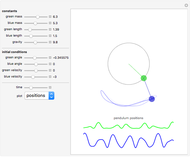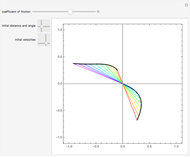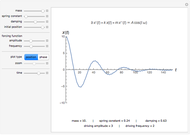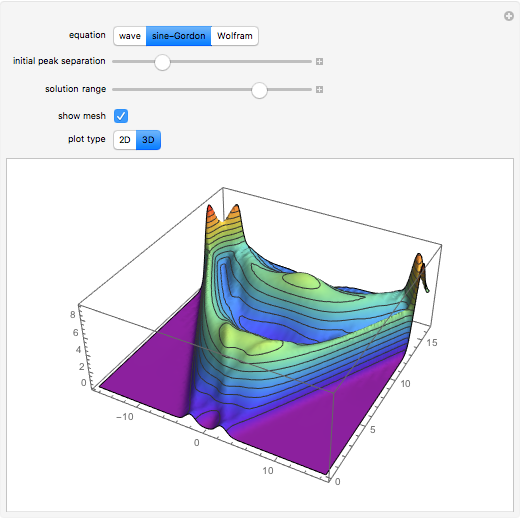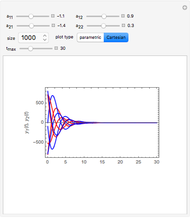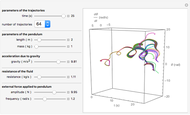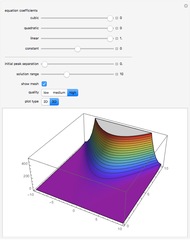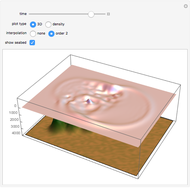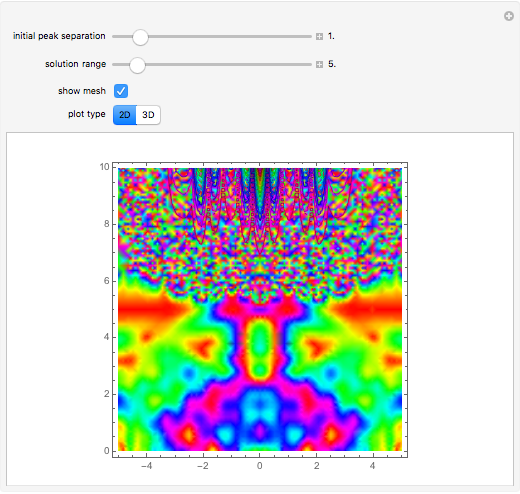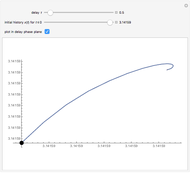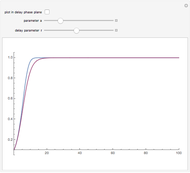Ikeda Delay Differential Equation

Requires a Wolfram Notebook System
Interact on desktop, mobile and cloud with the free Wolfram Player or other Wolfram Language products.
This Demonstration shows solutions of the Ikeda delay differential equation,  , a very simple equation with complex chaotic dynamics.
, a very simple equation with complex chaotic dynamics.
Contributed by: Rob Knapp (March 2011)
Open content licensed under CC BY-NC-SA
Snapshots
Details
A form of the equation was first proposed to model an optical bistable resonator system [1]. The route to chaos as  increases to
increases to  is described in [2]. For larger values of
is described in [2]. For larger values of  the solutions look and behave statistically like Brownian motion.
the solutions look and behave statistically like Brownian motion.
Snapshot 1: just above the value  , where the stable quilibrium changes from a node to a focus
, where the stable quilibrium changes from a node to a focus
Snapshot 2: just above the value  , at which there is a Hopf bifurcation and the appearance of a limit cycle
, at which there is a Hopf bifurcation and the appearance of a limit cycle
Snapshot 3: just above the value  , at which a pitchfork bifurcation occurs, leading to two coexisting limit cycles
, at which a pitchfork bifurcation occurs, leading to two coexisting limit cycles
Snapshot 4: the other limit cycle for the same value of  ; the initial condition is very close to that of snapshot 3
; the initial condition is very close to that of snapshot 3
Snapshot 5: just above the value  , at which a period doubling occurs
, at which a period doubling occurs
Snapshot 6: just above the value  , where chaos first occurs; note how the solution looks much like Brownian motion
, where chaos first occurs; note how the solution looks much like Brownian motion
Snapshot 7: just above the value  where a periodic window appears
where a periodic window appears
[1] K. Ikeda and K. Matsumoto, "High-Dimensional Chaotic Behavior in Systems with Time-Delayed Feedback," Physica D, 29, 1987 p. 223.
[2] J. C. Sprott, "A Simple Chaotic Delay Differential Equation," Physics Letters A, 366, 2007 pp. 397–402.
Permanent Citation








